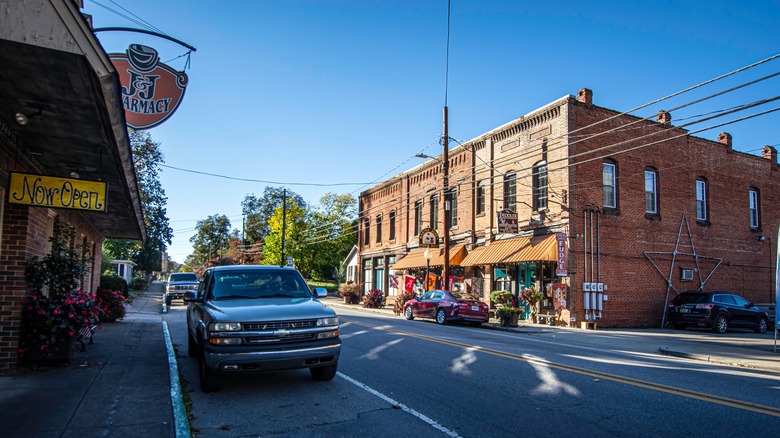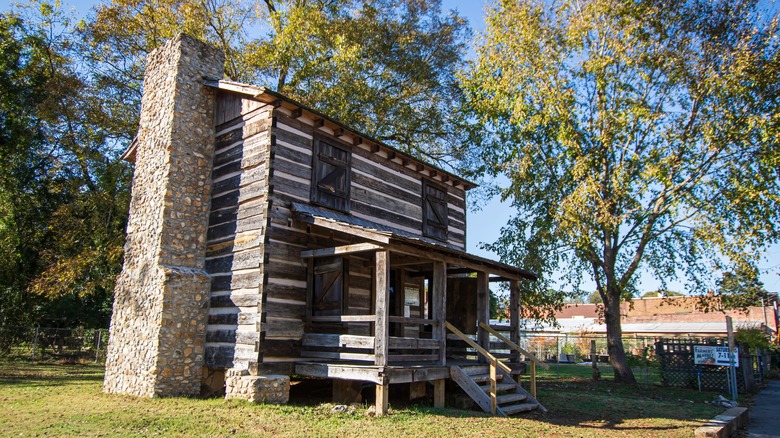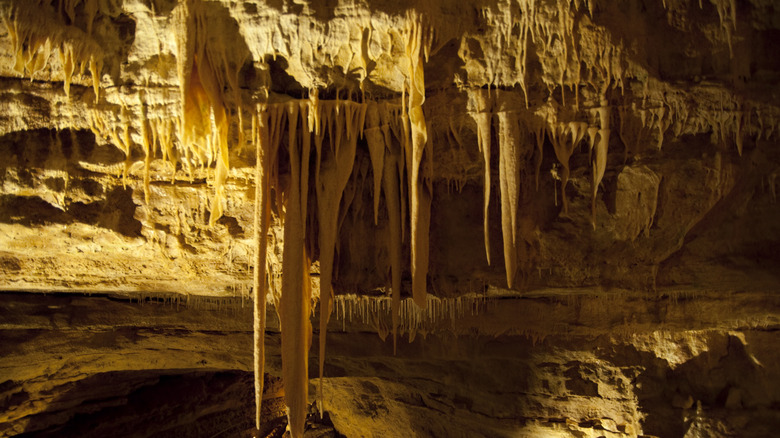This Historic, Hidden Gem Town In Georgia Is Full Of Unforgettable Things To Do
Georgia is one of the best states for history buffs to add to their bucket list. Throughout the state, you'll find the most historic landmarks and attractions representing the triumphs and challenges of America's past. Big cities like Atlanta and the friendly city of Savannah are top destinations for most tourists planning a trip to Georgia. However, if you want to dive deep into America's past, some of the best places to do so are off the beaten path. One such place is the historic town of Cave Spring, Georgia.
Just under a 10-minute drive from the Alabama border and about a one-and-a-half-hour drive from Atlanta, you'll come across this small, Southern town nestled amidst Georgia's peaceful countryside. With about 1,200 residents, this hidden gem flies under the radar rather easily. However, this shouldn't be the case. Preserved buildings and attractions in Cave Spring stand today to tell important stories of the country's history. Meanwhile, present-day Cave Spring boasts a vibrant, charming community and the opportunity for fun outdoor activities.
Historic sites from the Trail of Tears and Antebellum South Period
Cave Spring, Georgia, is one of the many towns that sit along the Trail of Tears National Historic Trail. This route through Southeastern America marks the journey that the American government forced Native American tribes along in the 1830s. These communities were torn from their ancestral land, taken from their homes, and relocated to territories in the West.
The Vann Cherokee Cabin is a site in Cave Spring that was built by a Cherokee man named David Vann in 1810. Today, it symbolizes the first phase of the Trail of Tears. During these first stages, the U.S. military imprisoned Native Americans in camps before taking them further along the Trail of Tears. The Vann Cherokee Cabin in Cave Spring is a location where visitors can reflect and remember these brutal and tragic events.
Located just 10 minutes west of the city limits, Chubbtown is another historic site to see while visiting Cave Spring. In 1846, before the Civil War, a Black man named Henry Chub purchased this property. The area became a respite where previously enslaved, freed Black Americans formed a self-governing town. Due to flooding, a cemetery and church are the last standing establishments from the once flourishing Chubbtown. Stepping foot in this town brings visitors awe and inspiration, as historians still do not know how this community built itself amidst the South's ongoing practice of slavery.
Visit the town's namesake cave and water spring
Another historic site in Cave Spring, Georgia, is the town's freshwater spring. Although this destination reflects lighter subject matter, the spring is still a significant and fascinating place to visit. For decades, this natural feature has served as a water source for residents of Cave Spring. In fact, the first settlers began their town in this location because they came across this useful resource. The spring sits outside a large cave located in Rolater Park. Visitors are welcome to bring water bottles and jugs and fill them up with the clean drinking water pumping from the spring.
During the summer, guests can also venture inside the cool cave behind the spring. For $2, you can explore this natural, limestone cavern. Adorned with impressive stalagmites and other unique rock formations, this cave is something you won't want to miss. When you're done, take a dip in the second-largest swimming lake in Georgia, the Cave Spring Pool. You can also hit the snack bar, volleyball area, picnic tables, and bathhouse on site. This, just like the cave, is only open during the summer months.


